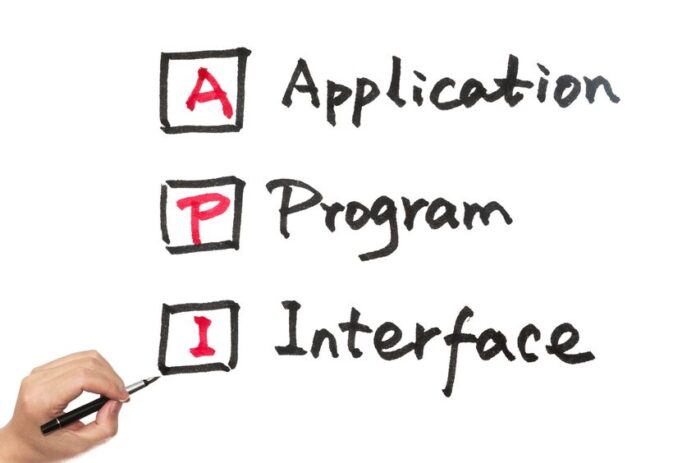Network Application Programming Interface (API) and programmability are transforming how businesses consume connectivity and the way service providers interconnect.
The role of API has changed the way network services are being delivered. In Software-Defined Networking (SDN), API enables greater orchestration and automation of the network, simplifying the provisioning and managing of network required for a service or application.
Across the ICT landscape, the use of API is moving beyond just A to B connectivity. It is now about bridging networks and services, allowing businesses to access and integrate connectivity in the same way developers integrate Google Maps into their own applications. Seamless accessibility to network services via APIs means that service providers are able to present a holistic service to customers and users.
Network service providers today can interwork both commercially and technically via APIs. Unlike in legacy networking, partners are restricted by rigid interconnections and siloed networks. With programmable technical and commercial interfaces, service providers can now enable intelligent and dynamic network interworking.
APIs brings a fresh, efficient approach to interconnecting and partnering within the networking community. Global connectivity is about building a platform-driven, software-defined ecosystem that allows partners to extend across infrastructures, giving users on-demand access to the network services they need.
The next network transformation
Network programmability in SDN is supporting, if not, enabling the adoption of network APIs to enhance operational efficiency through automation and orchestration.
Increasing competition in the wholesale market and fast-changing user expectations mean businesses and service providers have to evolve their approach.
In an era of disruption, network APIs can solve a business challenge as well as creating new opportunities. But why do APIs really matter?
- Cost-efficiency and Performance
The business of buying and selling connectivity has traditionally been focused on time-consuming commercial agreements and manual ordering processes, rather than automated technical integration.
While SDN has made the network programmable, eastbound and westbound APIs make the services more accessible. The whole business of provisioning connectivity becomes faster, seamless and far more cost-effective. Network APIs streamline relations between partners and remove unnecessary cost from the procurement process
- SDN Platforms and New Speed-to-Market
Network APIs allow for an agile response to new business opportunities. In a world that increasingly expects instant access to services and the ability to scale demand up and down at will, any innovation that speeds up time-to-market will hugely increase competitiveness.
Not only will programmable networking increase responsiveness to market needs, it can also facilitate reach into new markets by making partnerships between providers of services more dynamic and fluid. The integration of SDN platforms at an API level can create a mesh of on-demand network infrastructure, enabling partners to immediately add new services and reach to their offering.
- DevOps and Automation
Network APIs allow software developers to harness the full power of today’s SDN, enabling them to build apps that are native to a Cloud-centric, on-demand world.
We can expect industry standards that will further shape the use of network APIs and enable the automation of the entire lifecycle for services, orchestrated across multiple networks and technology domains within a provider’s network.
- Networking as a Utility
The API economy is a whole new way to do business. For any company with networking at its heart, network APIs offer a way to integrate with the infrastructure of other network-centric businesses, using the power of software to tap into on-demand connectivity platforms.
This model allows partners to provision services on each other’s networks in real-time. The result is elastic and programmable connectivity that can be turned on and off like a utility.
- Digital Experiences versus Unit-Based Procurement
Network APIs enable businesses to create new digital experiences that are underpinned by accessible and programmable connectivity. Connectivity solutions presented via API can be shaped to the needs of a platform, application or business objective.
Developers can use network APIs to solve much bigger challenges whilst relying on consistent and high-performance networking. Procurement of connectivity has to date been unit-based and centred around price rather than value. APIs change that.
Role of APIs in the 5G era
As 5G is deployed across mobile networks, the programmability that network APIs deliver will be crucial for managing growing traffic loads and mission-critical applications. Network APIs can enable service providers to offer greater integration and interplay between 5G-enabled applications and the core network services.
Mission-critical communications across an energy grid or with connected vehicles in logistics, demands the network to be flexible, fluid and adaptable in real-time. 5G opens the door to all kinds of innovation across industries, but the way we utilise the network also has to change to enable these new solutions.
In the 5G era, mobile network operators (MNO) will be at the forefront to experience the massive traffic growth. They will have to cope with managing network resources across multiple locations which makes it extremely complicated. This is where SDN will come in. By partnering with an API-first network provider, MNOs will be able to give customers and users extended access to global connectivity and meet their needs on the fly.
As the network API economy grows, we will see more and more players interworking with APIs to deliver an increasingly efficient and programmable model for network integration. It is an ecosystem that can only get richer and more diverse as it develops.
Network APIs are the foundation for a whole new way of networking and change how networks will be connected and optimised globally.

